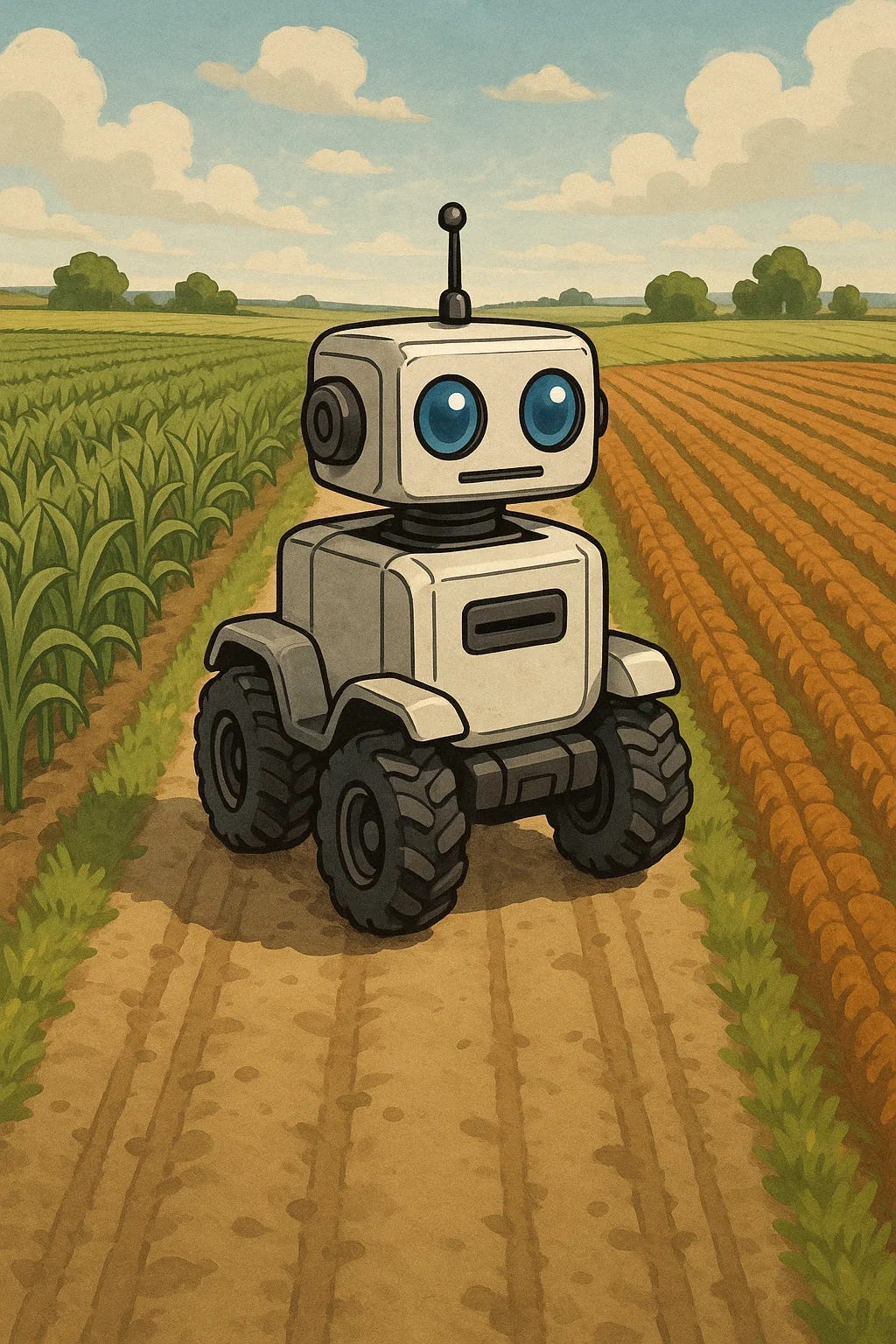Farmers are able to use robot for monitoring the crops
The fundamental breakthrough lies in how artificial intelligence reinterprets the core elements of farming. Traditional agriculture depended on observable environmental cues and accumulated experience, but modern systems now process millions of data points through integrated sensor networks. Soil analysis has undergone particularly radical change. Companies like CropX deploy underground sensors that generate three-dimensional soil maps, identifying micronutrient deficiencies with medical grade precision. During recent trials in Heilongjiang, this approach slashed fertilizer use by nearly a third while paradoxically boosting rice yields by fifteen percent. Water management has seen comparable innovation through AI driven irrigation platforms. These systems synthesize hyperlocal weather predictions with real time crop hydration models, creating irrigation schedules that respond to actual plant needs rather than fixed timetables. In California vineyards, such technology achieved water savings exceeding forty percent, while pilot programs within China’s power grid simultaneously reduced energy waste by optimizing pumping cycles during off-peak hours. Perhaps most remarkably, AI is accelerating nature’s timescales in plant breeding. At research stations in Jilin province, “Feng Deng” AI-powered robots equipped with computer vision now autonomously scan cornfields, identifying disease resistant specimens in hours rather than years and result in compressing the traditional decade long breeding cycles into three to five years through algorithmic selection.
Beyond isolated applications, artificial intelligence now orchestrates entire agricultural lifecycles. Pest management exemplifies this holistic shift. Simple smartphone applications allow farmers to photograph suspicious leaves and receive instant pathogen diagnoses. In Cameroon, offline AI tools helped rural communities reduce crop losses by over a third by enabling early disease detection. More advanced systems like Trapview’s monitoring stations track insect migration patterns across entire regions, allowing preemptive strikes that cut pesticide usage by twenty percent. Harvest operations reveal similar automation leaps. LaserWeeder robots now patrol fields, eliminating weeds with ninety nine percent accuracy while replacing dozens of manual laborers. In Shandong’s unmanned farms, combine harvesters guided by BeiDou navigation satellites operate continuously through night hours, boosting efficiency by thirty percent while minimizing grain loss. The revolution extends even to post-harvest economics. Guangxi’s lychee farmers now employ AI grading systems that automatically sort fruit by size and sweetness, directing premium produce to high-end markets and generating twenty-five percent price premiums. Coordinated algorithms simultaneously optimize refrigeration logistics across the supply chain, reducing spoilage from nearly twenty percent of the crop to just seven percent.
Despite these measurable gains, significant barriers prevent widespread adoption. The most immediate challenge involves economic accessibility. Advanced agricultural AI requires substantial infrastructure investment, creating a stark technology divide. For smallholder farmers in sub-Saharan Africa, where equipment costs often exceed twenty percent of annual income, systems like Ghana’s two-thousand-dollar soil analyzers remain financially out of reach. Current estimates suggest barely thirty-five percent of African farmland possesses the connectivity required for even basic AI applications. Data fragmentation presents another critical obstacle. Agricultural information remains scattered across government databases, corporate servers, and research institutions with incompatible formats. This lack of standardization creates dangerous knowledge gaps. For example, one Chinese crop model trained primarily on temperate-region data showed error rates spiking by forty percent when deployed in tropical rainforest conditions, demonstrating how easily algorithms can develop regional blind spots. Perhaps the most underappreciated challenge involves human adaptation. German agricultural workers now require retraining to operate complex AI interfaces, while in India’s Telangana state, the World Economic Forum achieved success only after developing dialect specific AI assistants to guide chili farmers through new protocols. Their nine-month pilot program ultimately delivered both economic benefits with eight hundred dollars per acre income increases and environmental gains through nine percent pesticide reduction.
This ongoing transformation transcends mere technical optimization. When algorithms shift from being efficient tools to becoming agricultural decision makers, they fundamentally redefine the farmer’s role. The cultivator evolves from being at nature’s mercy to becoming an informed ecosystem manager who anticipates challenges rather than reacting to them. The true harvest of this silent revolution includes the thirty percent fertilizer reduction in Heilongjiang, the flood warnings reaching Kenyan farmers’ mobile devices before storms arrive, and the potential stabilization of food systems supporting billions globally. Still, technological promise alone remains insufficient. Meaningful progress demands innovative policy frameworks like Singapore’s robotics tax subsidies and China’s agricultural data sharing platforms that bridge the gap between corporate innovation and smallholder realities. Only when artificial intelligence comprehends both soil chemistry and farmers’ financial constraints will algorithmic agriculture truly take root in the earth that sustains us all.

